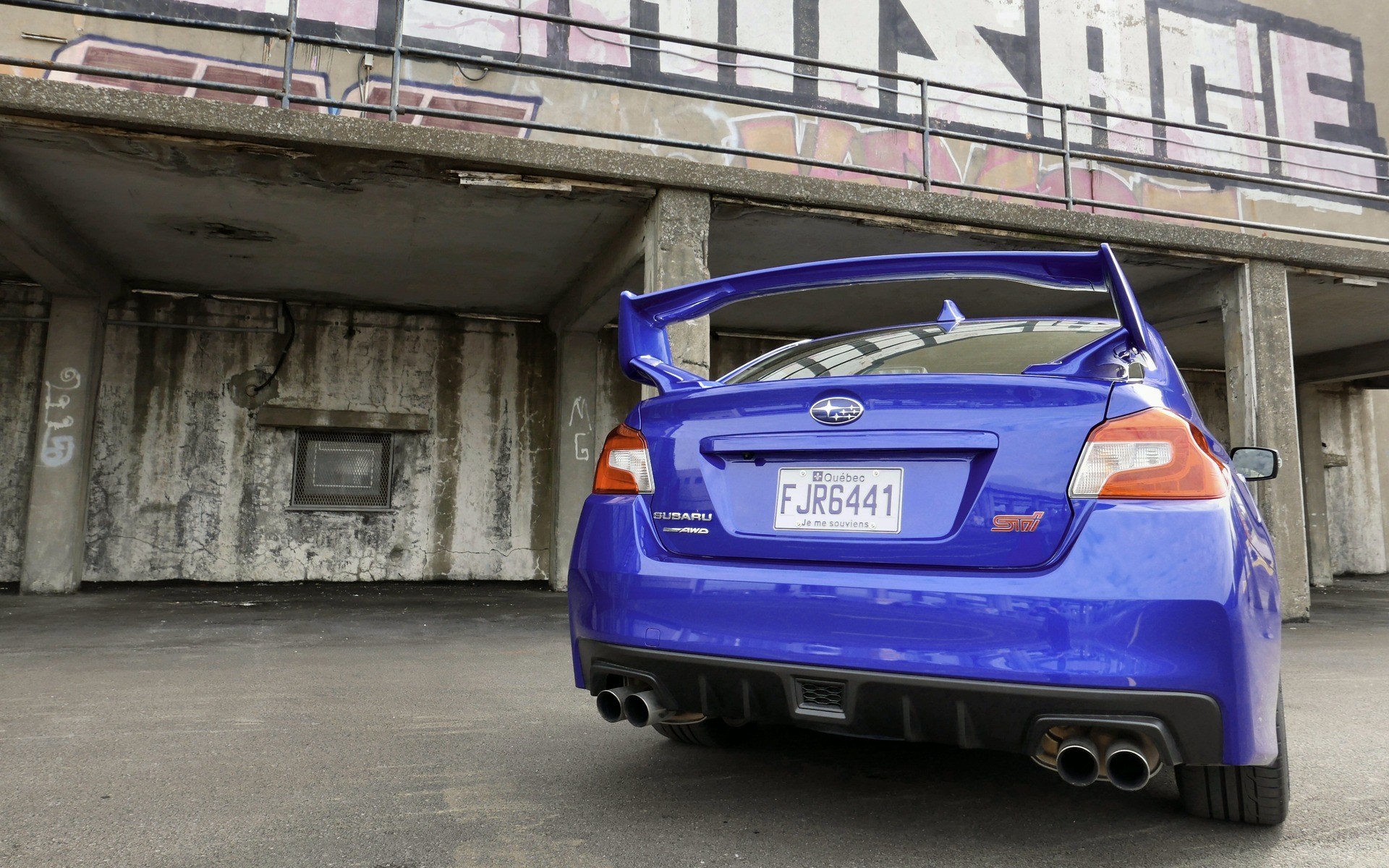2015 Subaru WRX STI: Honing The Edge


It's been a year since the 2016 Subaru WRX STI received its most recent redesign, but unlike its less-endowed WRX platform-mate it's no longer operating in a class of one. Whereas the base WRX faces no real direct competitors at its price point, the introduction of the Volkswagen Golf R means it's no longer impossible to find another high-performance compact that combines turbocharged power with standard all-wheel drive and the availability of boy-racer body work. Not only that, but the Ford Focus RS - which offers much the same formula - is anticipated to hit the scene in early 2016, tripling the options for would-be WRX STI shoppers.
(Note: I've purposely excluded the Mitsubishi Lancer Evolution, a vehicle that's been neglected by the tri-diamond for far too many years, and which shuffles off this mortal coil within the next 12 months - possibly forever).
Read also
Does the 2016 Subaru WRX STI have what it takes to soldier forward as the standard-bearer of rally-inspired high octane shenanigans? I spent a week behind the wheel of the latest STI model to try and find the answer to that question.
Quick, Fun, and Flashy
The 2016 Subaru WRX STI hasn't taken its boot off the back of your neck when it comes to hairy horsepower thrills. The 2.5-litre turbocharged four-cylinder engine chuffing away through its uneven-length exhaust headers produces 305 horses and 290 lb-ft of torque, numbers that are good enough for a five second sprint to 100 km/h - if you don't mind abusing the standard six-speed manual's clutch, that is. The car's all-wheel drive system features a driver-controllable centre differential that provides a respectably granular distribution of torque front and rear, but it's also tricky to spool up from a stop as there's no launch control feature offered to take advantage of the STI's copious amount of grip.
The WRX STI's limited-slip differentials (not available with the base WRX) are most noticeable in a track situation, as is the car's more pleasing hydraulic steering system (replacing the electric rack in the WRX). Handling remains precise, with the car providing good feedback from both the chassis and the front wheels, and the overall Subaru experience is less insulated than that offered by the softer Golf R.
Another area where the Subaru WRX STI edges out a lead against its VW rival is when comparing the audacity of their respective wardrobes. The STI's available trunk-mounted picnic table / rear spoiler is sufficiently enormous to mark you as too irresponsible for promotion should your boss catch you walking away from the car in the corporate parking lot, as well as tag you for harassment at every spotlight by hard-looking teens in bagged Integras and loud Mustangs.
Luxury-Like - If You're Willing To Pay The Price
The 2016 Subaru WRX STI is undeniably expensive when compared to its WRX sibling. The 40-horse gap between the two models partly explains the $8,000 ask for the STI over the WRX, with the car's trick differentials and beefed-up suspension occupying much of the rest of that space. Still, if you want the wing and the subtle exterior upgrades that go with it, you're going to have to move beyond the WRX STI's $37,995 starting MSRP and choose the Sport package ($40,795), or better yet the $45,395 Sport Tech package, what with its louder stereo system and leather sport seats.
I spent hundreds of highway kilometres inside the confines of the Subaru WRX STI, and from both the front and the rear seats it's a comfortable road trip companion that doesn't sacrifice much smoothness for the sake of stiffness in its chassis. That being said, it's definitely not a luxury car - think 'near-premium' - and once you spend $45k on a compact sedan you have to be an absolute brand loyalist not to notice the larger, more plush, and in some cases more powerful two-and-four-door options that abound at the STI's price point.
Compelling For The Right Buyer - But Not All Buyers
The 2016 Subaru WRX STI makes a compelling argument for a very specific niche buyer, one who is dedicated to weekend track excursions and who will take full advantage of the impressive performance envelope that the car's advanced all-wheel drive system and controllable differentials have to offer. Unfortunately, given the price structure of the WRX family it's harder to recommend the STI in any other role.
Subaru is in the awkward position of having two very good products whose performance gap is narrower than the one separating their respective window stickers. As the ultimate evolution of a formula based on an economy platform (the Impreza), the STI's $37k starting price stretches credulity. At almost $1,000 more than a fully-loaded WRX, which is as-good of a car anywhere but on a road course, it's hard to justify the STI as a daily driver if you have no motorsports intentions. The same argument can be made, of course, for the Golf R (GTI) and the undoubtedly as-expensive Focus RS (ST), despite the added practicality of their hatchback body styles. In creating a class of elites, these three automakers have shifted their pool of potential buyers away from boy racers to those with the means of a someone in the throes of a mid-life crisis - or the even narrower list of customers willing to spend their way to track-day superiority.








